A320 Fenix: The secondary flight plan, this unknown...
Unknown, because until now with the Airbuses available to us in MSFS, the default A320 or the A320 from FlyByWire, the use of the secondary flight plan was not implemented (with a slight improvement, however, for the FBW for which pressing the SEC F-PLN key nevertheless causes the appearance of the page, but without the possibility of action. It is reasonable to think that this function will exist for this aircraft in the more or less short/long term).
For information, this function already exists in the Flight Factor A320 Ultimate and in the A319 from ToLiSs for X-Plane.
The A320 Fenix changes the game, because this page becomes fully functional and the question that can be asked is then: "What can a secondary flight plan be used for?". In this tutorial, we are going to show you one of the possible uses.
In an ideal world (and often in mainstream simulation), everything goes well, all the time.
In reality, more or less impactful breakdowns can occur and this, from the take-off run or take-off.
Certain malfunctions (engine breakdown or surge, fire, smoke, hydraulic problem, electrical problem, etc., i.e. breakdowns with high time pressure) will probably cause the crew to return as quickly as possible on the ground, the obvious solution being a return to the starting area (weather and landing performance permitting).
That's good, as we are leaving, we already know the weather conditions prevailing there and the runway and procedure in use.
In order to "save" time, the use of the secondary flight plan can then prove to be very useful.
The goal is therefore, thanks to the secondary flight plan, to prepare a return "just in case"...
Thus, if the failure occurs very quickly at the start of the flight, it will suffice, via the SEC F-PLN key of the MCDU, to activate the secondary flight plan previously created for an immediate return so that it thus becomes the main flight plan and that the FM is directly completed and informed in order to trigger the planned approach.
All of this will, of course, have been briefed within the crew at the take-off briefing stage, which will include an item "What to do in the event of a breakdown on departure" which will allow the crew members to be in the same action plan. Very often, the airlines will have developed trajectories either called "standard" (such as for example "Climb in the axis of the runway at 2000 feet"), or specific according to the departure terrain because, for example, of an obstacle to avoid "from 500 feet, turn to heading 330 while continuing to climb towards 3000 feet".
In the screenshots that follow, we suggest the sequence of actions to be carried out to complete this "emergency" flight plan.
In our example, we are leaving Rennes on runway 28 (which is the runway in service today) towards Brest. We are considering, in the event of a breakdown, a return to Rennes on runway 28, via the ILS (which is only CAT I in Rennes, which implies a minimum visibility of 550 m and a ceiling/floor of at least 200 feet. Only one of these two parameters below either of these values will de facto prohibit the possibility of a return to Rennes and another strategy will have to be defined before departure [choice of another alternate site at take-off]).
At this stage of flight preparation, the necessary data has already been entered on the INIT A, F-PLN, RAD NAV pages, INIT B and PERF of the FM.
Then comes the time to fill in the secondary flight plan.
NB: the red frames indicate the action to be performed, the yellow frames indicate, in certain pages, the result of the previous action.
1 - Press the "SEC F-PLN" key on the MCDU keyboard
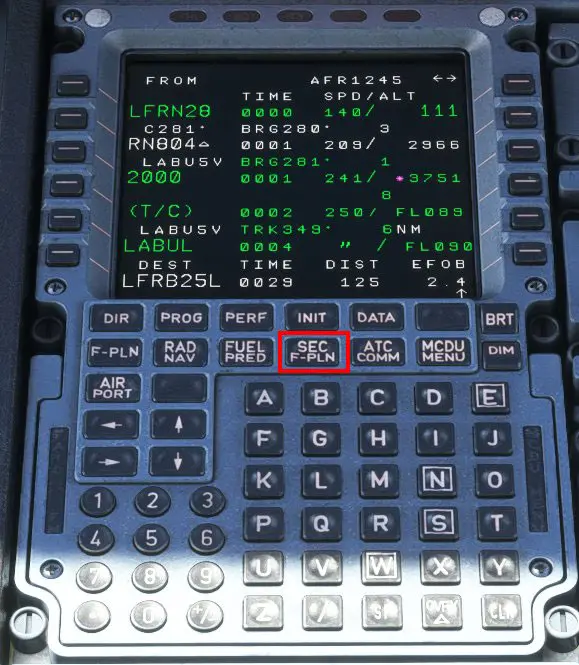
2 -Press the key opposite the indication "INIT >"
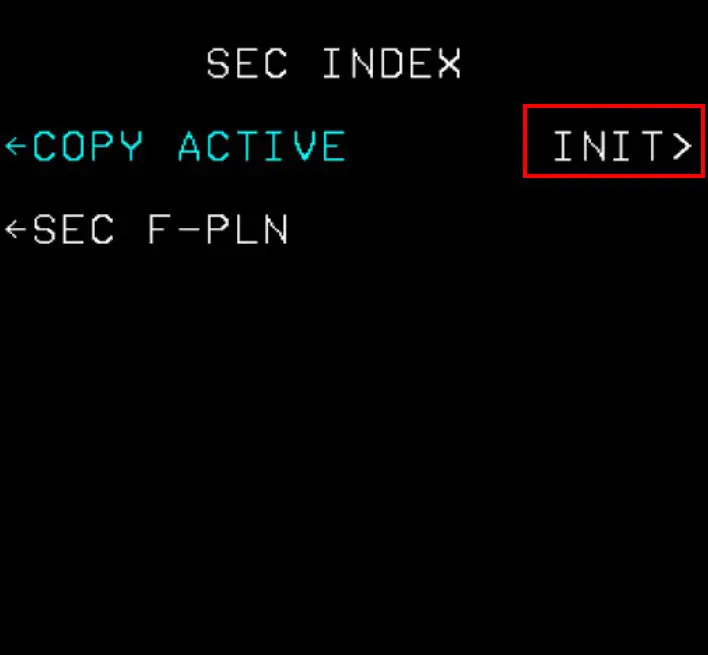
3 - Introduction of departure and arrival airports (here it is the same because this secondary flight plan brings us back to the departure field). It is not necessary to fill in the other data.
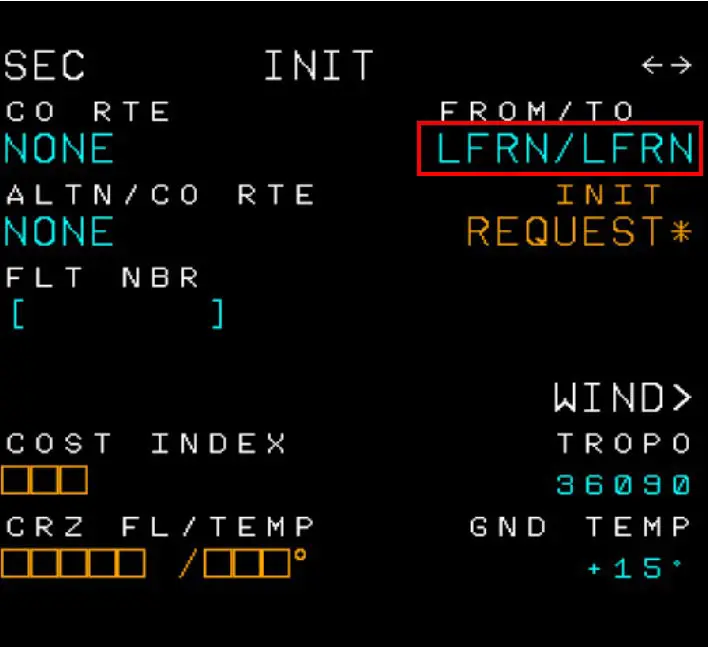
4 - Press the "SEC F-PLN" key on the MCDU again, then press the key opposite "<- SEC F-PLN"
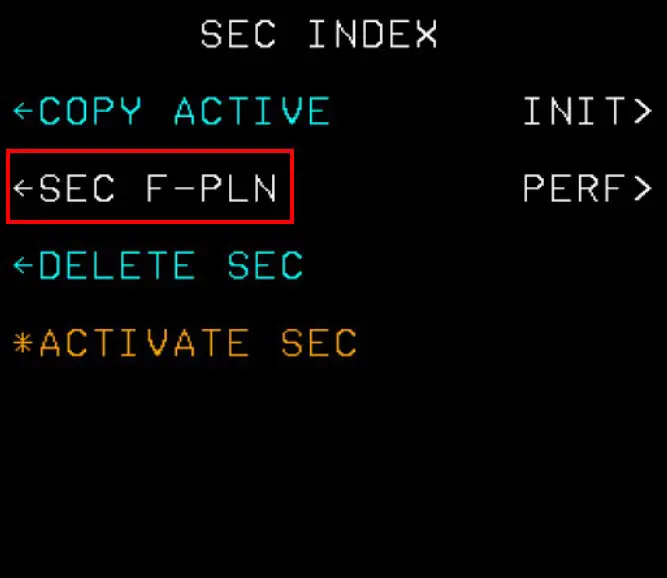
5 - Press the button opposite the return pitch "LFRN"
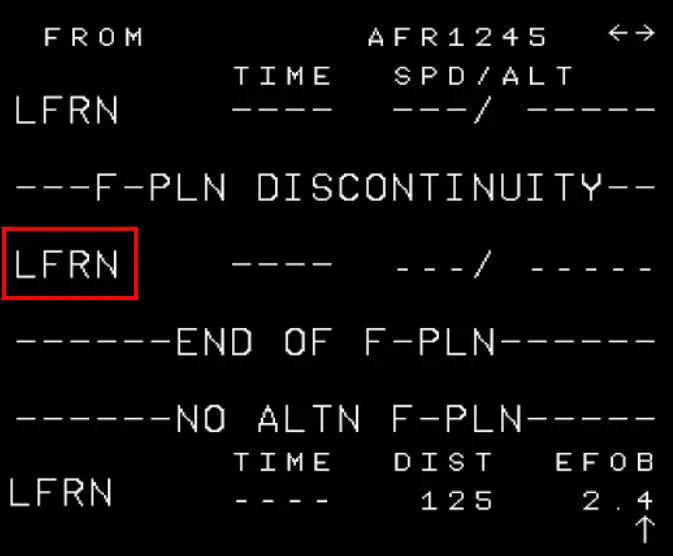
6 - Press the key opposite "ARRIVAL >" to enter the approach procedure
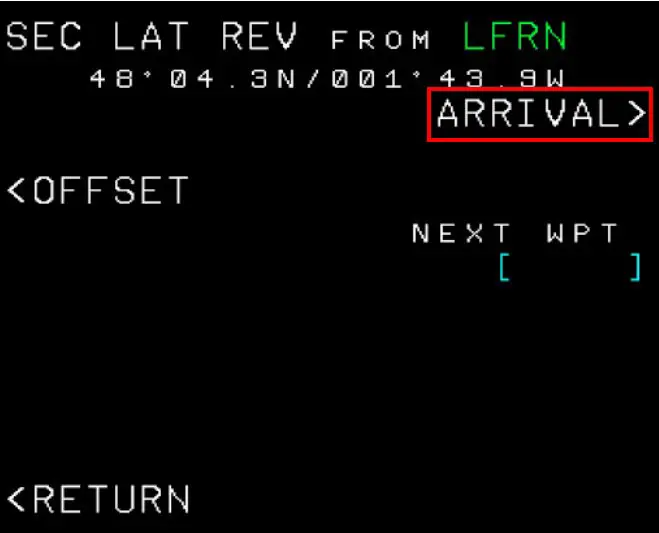
7 - Introduction of the procedure: here "ILS28", no "STAR" and no "VIAS", the return will be initially selected until the ILS is seized
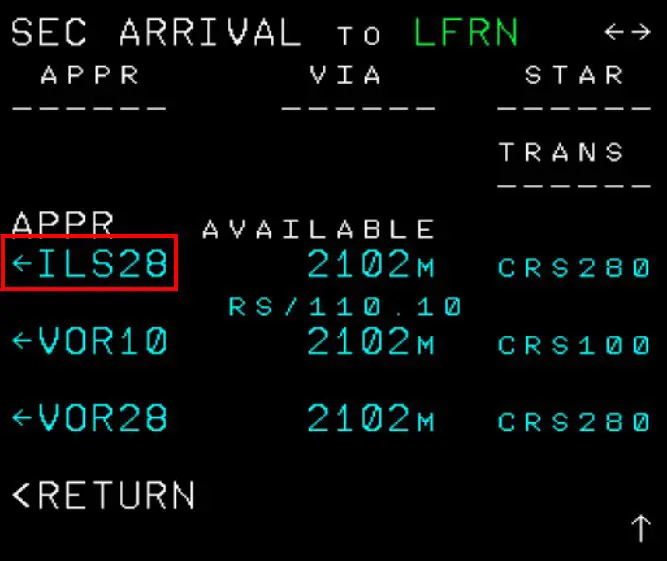
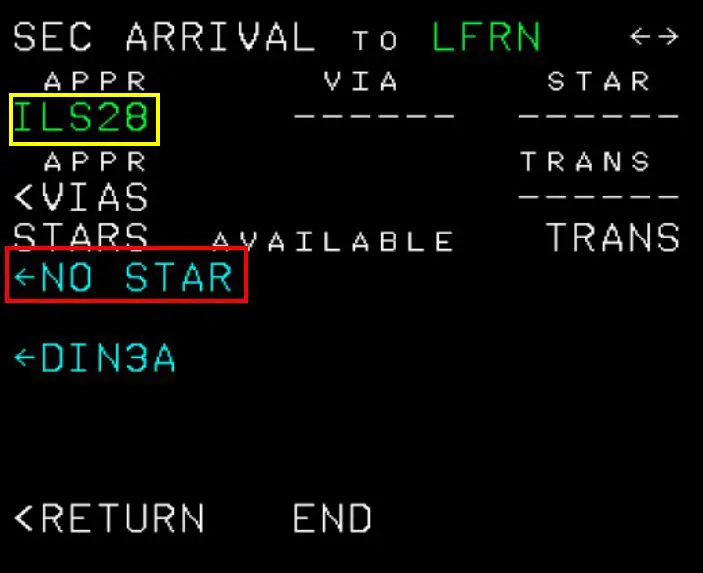
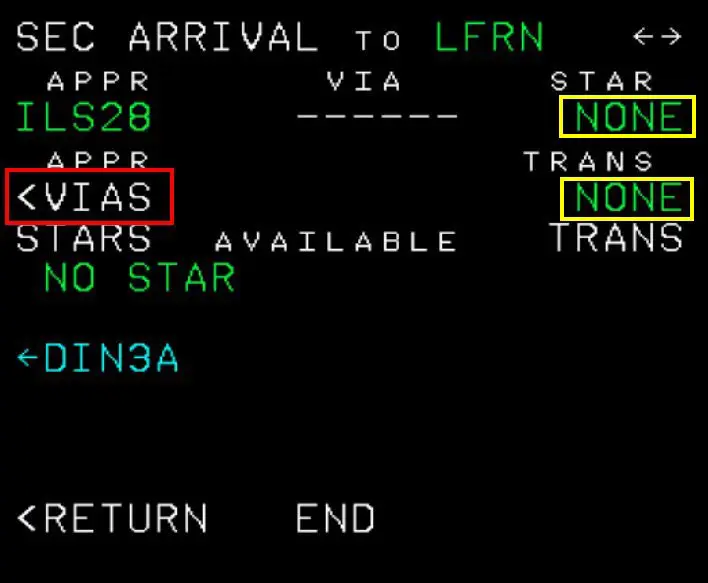
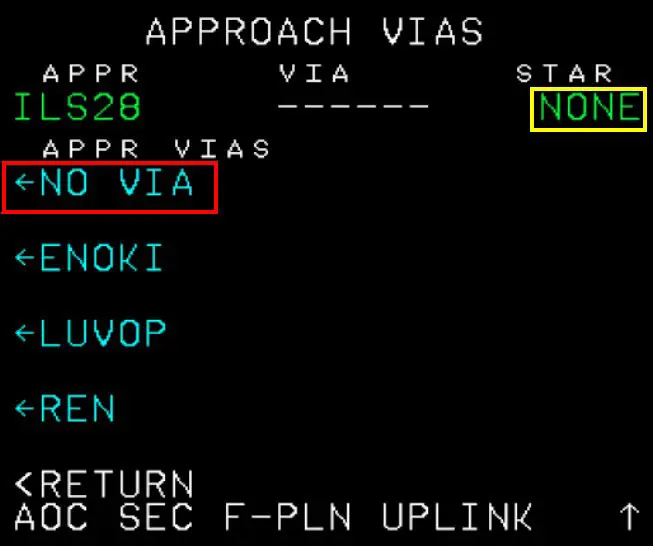
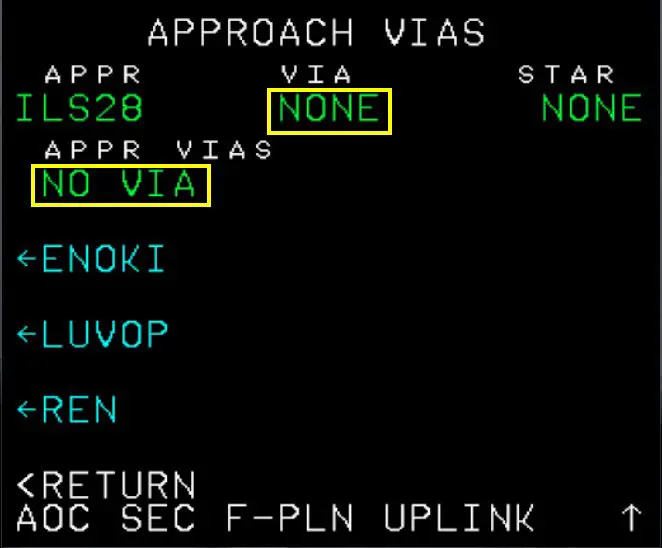
8 - You can check on the ND in "PLAN" mode that the trajectory is correct (here a straight white line [white = secondary flight plan] in the axis of runway 28).
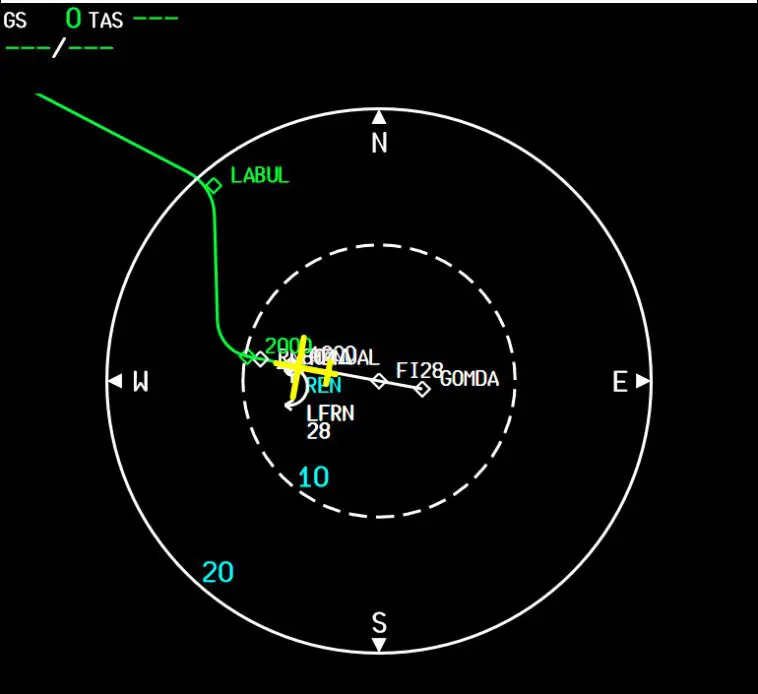
9 - Press the "SEC F-PLN" key again on the MCDU keyboard, then the "PERF" key (then 4 times on the "Next Phase" line) to go to the APPR page in order to complete it
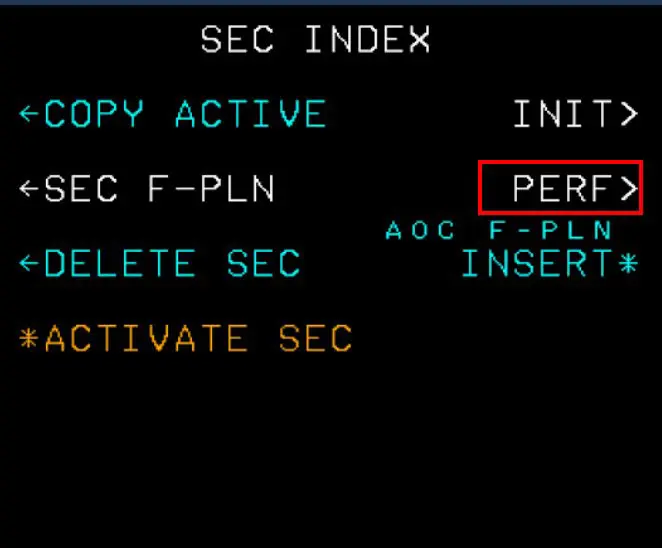
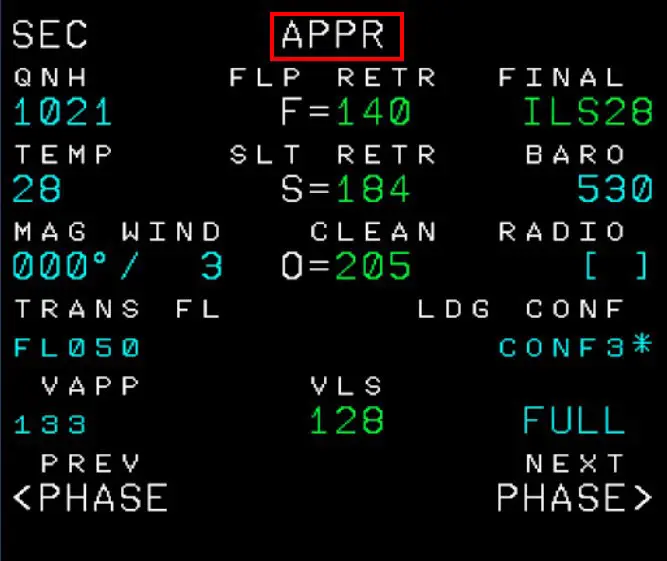
The secondary flight plan is finished, you can return to the main flight plan by pressing the "F-PLN" key on the keyboard.
What to do (simplified) in the event of a breakdown on takeoff
- If available, engage the autopilot, which will allow the crew, while continuing to monitor the flight path, to free themselves from intellectual availability to analyze the situation.
- The FM directing the aircraft (NAV mode engaged) and therefore programmed to follow the trajectory as inserted in the main flight plan, it will be necessary to quickly switch to HDG mode by pulling the appropriate button on the FCU
then steer the trajectory towards the chosen area (downwind leg?).
- In the same way, we can also switch to Speed mode (pull the button on the FCU) in order to keep control of the speed of the aircraft (which, if left to do so, will inevitably accelerate towards 250 kt).
- And finally, to control the altitude, we will possibly change the target value of the FCU (useless, perhaps to climb too high if we have to quickly return to land...).
Once the trajectory in direction, speed and altitude has been mastered, you can activate the secondary flight plan:
Press the "SEC F-PLN" key on the MCDU keypad then,
Press the key opposite *ACTIVATE SEC.
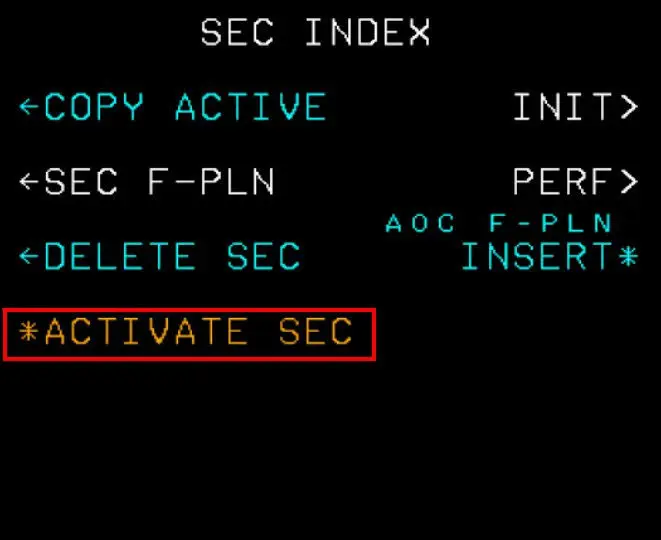
The secondary flight plan is activated and replaces the initial flight plan on the F-PLN page. We then find ourselves in the management of a trajectory to intercept an axis and then perform an ILS approach, whose parameters have already been inserted.